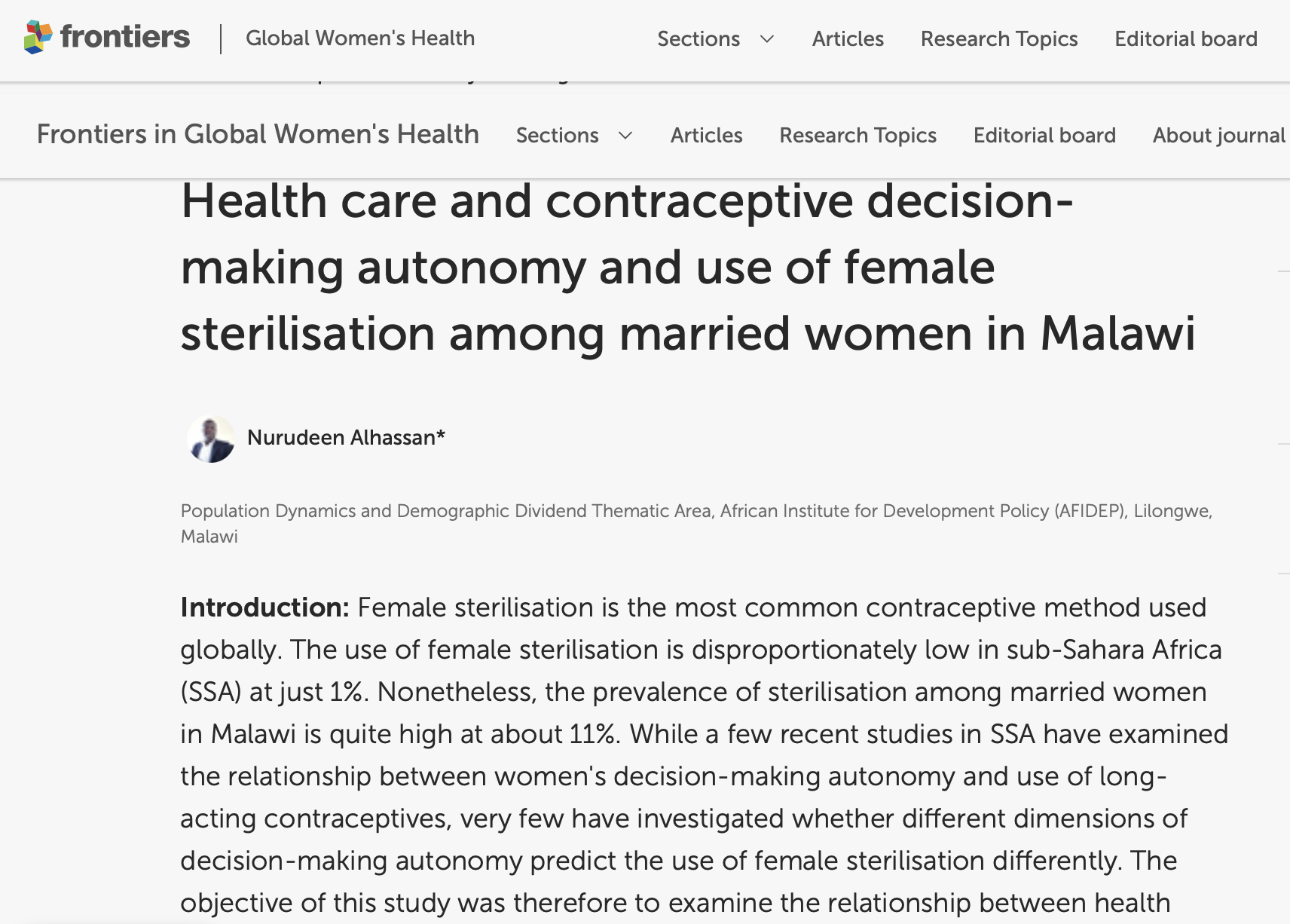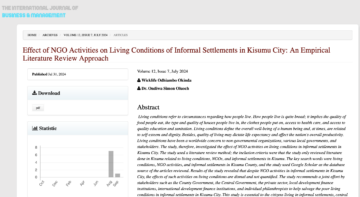
Female sterilisation is the most common contraceptive method used globally. The use of female sterilisation is disproportionately low in sub-Sahara Africa (SSA) at just 1%. Nonetheless, the prevalence of sterilisation among married women in Malawi is quite high at about 11%. While a few recent studies in SSA have examined the relationship between women’s decision-making autonomy and use of long-acting contraceptives, very few have investigated whether different dimensions of decision-making autonomy predict the use of female sterilisation differently. The objective of this study was therefore to examine the relationship between health care and contraceptive decision-making autonomy and the use of female sterilisation in Malawi.
The study revealed that the percentage of married women that made health care and contraceptive decisions independently was quite low. The main finding of this study was that contraceptive decision-making autonomy increased the relative likelihood of using female sterilisation while health care autonomy was associated with a lower likelihood of being sterilized. The socio- demographic characteristics that significantly predicted the use of female sterilisation included age, place of residence, household wealth and the number of children a woman had.
Author: Nurudeen Alhassan
Access the full text here: https://www.frontiersin.org/articles/10.3389/fgwh.2024.1264190/full
Related Publications





